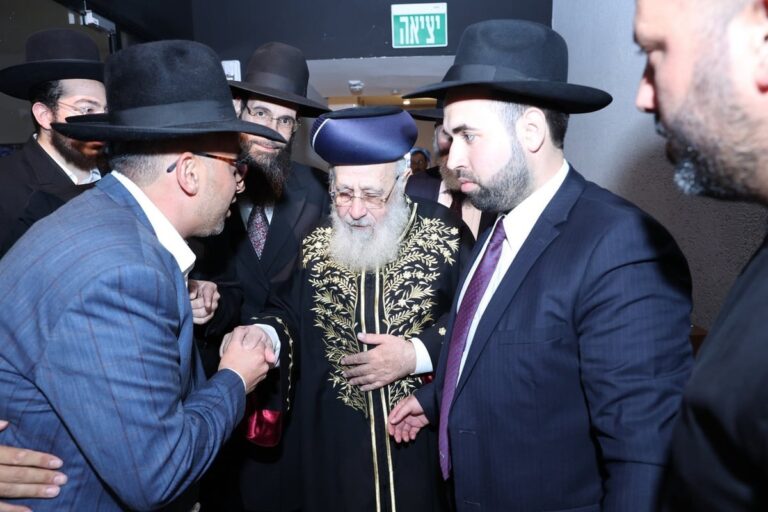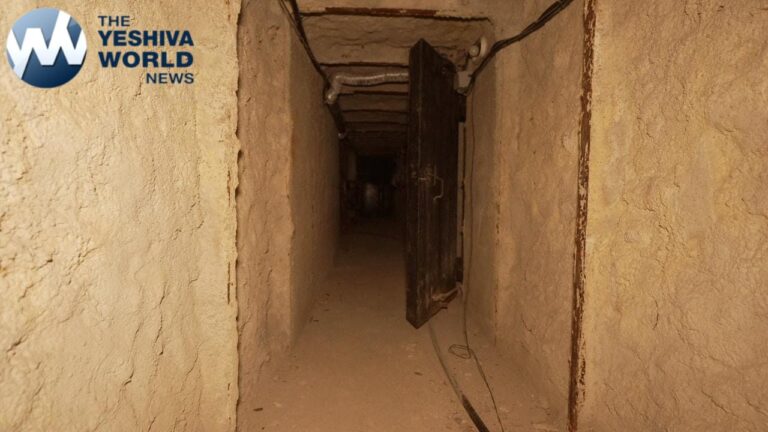 Almost two months ago it was reported that an anonymous man collapsed in a Meah Shearim mikve, and the man unfortunately was niftar on Rosh Hashanah. Officials believed they had identified him, and hours before the kvura that learned this was not the case and the burial was delayed as well.
Almost two months ago it was reported that an anonymous man collapsed in a Meah Shearim mikve, and the man unfortunately was niftar on Rosh Hashanah. Officials believed they had identified him, and hours before the kvura that learned this was not the case and the burial was delayed as well.
Zaka officials in Yerushalayim worked tirelessly to establish the man’s identity, and during his hospital stay, no one came forward to give testimony as to his identity.
During Sukkos, a nephew of the man went to visit his uncle in the Knesses Yisrael neighborhood where he resided, but there was no response. He began to question neighbors to see if they had information as to his whereabouts. The nephew turned to police; he referred him to Zaka’s Bentzi Oring, who asked to see a photo of the uncle.
Family members explained that the photo publicized by Zaka did not bear resemblance to the uncle, explaining the photo depicted an emaciated person. At present, they are not sure if the uncle, who lived alone and was never married, is indeed the anonymous yid who was buried without a name. DNA samples were taken from family members and a final determination is expected later this week.
Family members expressed pain over the reality that their uncle may have been buried anonymously and added if the DNA does indeed to prove this was their uncle; they will go to the kever to ask forgiveness over the entire incident, realizing there is a high likelihood that the anonymous man is indeed their missing family member.
(Yechiel Spira – YWN Israel)











5 Responses
This is a sad story and probably not so infrequent regarding the elderly and alone.
We should have a chesed system in force between neighbors in a frum neighborhood, to be on the lookout and aware of the circumstances of the elderly/alone in our buildings. Who is the next of kin? a telephone # to call when the person is sick?
is Kneses Yisroel a neighborhood close to Meah Shearim?
No, Knesess is one of the oldest neighborhoods in J’lem, near Machane Yehuda. Unfortunately, it is populated today by a variety of people, unlike the tight knit communities used to be. This may be why nobody knew him or took an interest.
ת.נ.צ.ב.ה.
Knesses Yisroel, known as ‘Knesset’ was built in the late nineteenth century. The houses are hekdesh (public property for eternity) intended for poor families and are located on both sides of Hanetziv Street. The houses were built by the General Committee of the Ashkenazi Community with funds donated by American Jews. The neighborhood was built in three stages: Knesset Aleph in the 1890’s consisted of single-storey homes around a central courtyard; Knesset Bet at the beginning of the twentieth century consisted of two-storey buildings around a central courtyard; Knesset Gimmel immediately after the First World War. The number of families in Knesset Israel increased from 125 in 1929 to more than 200 in 2005 making for very cramped living conditions.
It is within a few blocks of the original ‘Knesset’ and surrounded by Botei Broydeh, Botei Rand and Botei Munkatch.
The area houses many Frume Ashkenazic and Sfardic Families, but, unfortunately, not everyone living in these houses are Shomrei Shabbos.
I think what happened here is amazing. This man had was going to be niftar. Instead of being niftar in his house and noone finding him for 2 weeks, Hashem made him collaps in a mikva in Meah Shearim so that someone will find him. Even though he was buried without a name, at lease he was buried. If his name is now known, Editor, please post his name (and father’s name) so that we could do things l’ilui nishmaso. Yehi Zichroh Boruch.